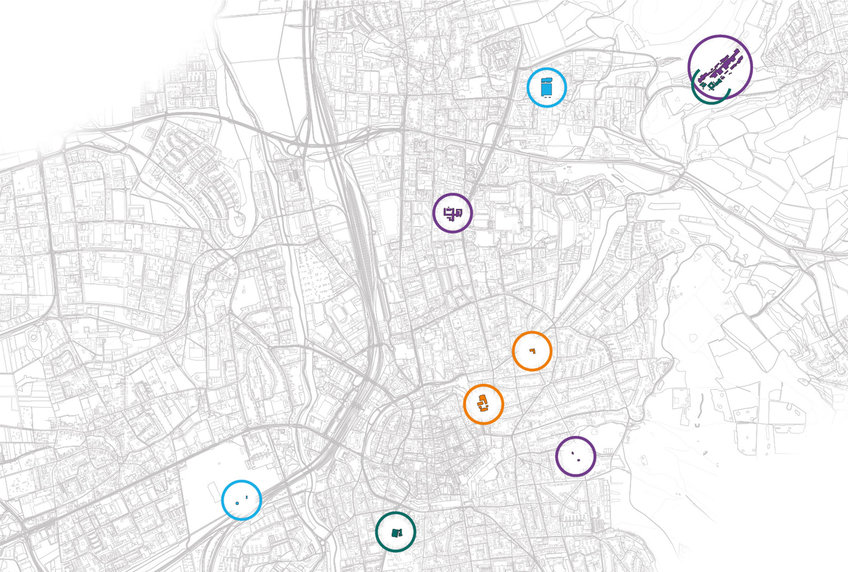
A town full of Planck
To celebrate the 75th birthday of the Max Planck Society, we set out to search footprints in Göttingen and were able to discover quite a few places with a Max Planck connection.
Merkelstraße and Hainholzweg

On May 16, 1945, Max Planck came to Göttingen on the initiative of British and US Allies. As former president of the Kaiser Wilhelm Society, he was to coordinate its reorganization from here. In the years before his death, Planck thus set the course for the foundation of the Max Planck Society. Plaques at his two Göttingen residences in the Ostviertel (Merkelstraße and Hainholzweg) today commemorate the famous resident.
City cemetery

On October 4, 1947, Max Planck died at the age of 89 in Göttingen. The formula of Planck’s quantum of action is engraved at the foot of the otherwise plain gravestone. On the cemetery, he is additionally immortalized alongside Max Born, Otto Hahn, Manfred Eigen, and other Nobel laureates in the so-called Nobel Rondell, a memorial in honor of the Nobel laureates who worked and lived in Göttingen.
Max Planck Gymnasium

Göttingen’s oldest school was founded in 1586. It is located in the heart of the city at Theaterplatz and teaches about 900 students. Since Max Planck’s death in October 1947, it bears his name.
Association house of the Aerodynamic Testing Facility

The cradle of the Max Planck Society is located in 10 Bunsenstraße in Göttingen, the association house of the former Aerodynamic Testing Facility. On February 26, 1948, the successor to the Kaiser Wilhelm Society was founded here. The chemist and Nobel laureate Otto Hahn assumed the office of the first president. Today, the association house accommodates the canteen of the German Aerospace Center.

Max Planck Institute for Dynamics and Self-Organization

The physicist Ludwig Prandtl founded the Kaiser Wilhelm Institute for Fluid Dynamics in Göttingen, which opened in 1925. The institute, which continued as the Max Planck Institute for Fluid Dynamics Research in the post-war years, changed its name to Max Planck Institute for Dynamics and Self-Organization in 2004. The scientists study complex systems such as turbulence in clouds, neuronal networks, or the physics of living matter in biological cells.
Max Planck Institute for Solar System Research

The Max Planck Institute for Solar System Research was founded in the Mecklenburg region in 1934, resided in Katlenburg-Lindau for a long time and since 2014 calls Göttingen its home. The research focus also changed over the years. Initially exploring the Earth’s stratosphere and ionosphere, the institute has been exclusively concerned with planetary and solar physics since 1997.
Max Planck Institute for the Study of Religious and Ethnic Diversity

The Max Planck Institute for the Study of Religious and Ethnic Diversity originated in 2007 from the restructuring of the MPI for History (founded in 1956 in Göttingen). It is dedicated to the study of social diversity in its various aspects. The scientists deal with questions of human coexistence – from peaceful to conflict-ridden.
Max Planck Institute for Multidisciplinary Sciences

Our institute has existed in its current form only since January 2022, but the history of the two predecessor institutes goes back a long way. The Medical Research Institute of the Kaiser Wilhelm Society was founded in 1947 in Göttingen, a short time later it was incorporated into the Max Planck Society, and from 1965 it was called the MPI of Experimental Medicine. The former MPI for Biophysical Chemistry was founded in 1971 by merging the Göttingen MPIs for Physical Chemistry and for Spectroscopy. For more than a year now, we have been combining scientific basic research with medical research approaches at the MPI-NAT.








